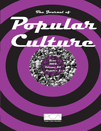
JOURNAL OF POPULAR CULTURE
metrics 2024
Unpacking Cultural Phenomena Since 1967
Introduction
The Journal of Popular Culture, published by Wiley, stands as a pivotal platform for the exploration and analysis of cultural phenomena since its inception in 1967. With its ISSN 0022-3840 and E-ISSN 1540-5931, the journal deeply engages with themes encompassing literature, history, and the broader arts and humanities landscape, further categorized in 2023 into distinct quartiles reflected by its superior rankings: Q3 in Arts and Humanities (miscellaneous), Q2 in History, and Q1 in Literature and Literary Theory. This journal not only ranks competitively in Scopus—positioned at the 73rd percentile in Literature and Literary Theory and achieving a significant recognition in History—but also cultivates a rich dialogue aimed at researchers, educators, and students alike. Through its non-open access model, the journal maintains a robust collection of scholarly articles that contribute to the understanding of popular culture's impact on society, making it an essential resource for academics and practitioners committed to this dynamic field.
Metrics 2024
 0.15
0.15 0.20
0.20 0.30
0.30 29
29Metrics History
Rank 2024
Scopus
IF (Web Of Science)
JCI (Web Of Science)
Quartile History
Similar Journals

REPRESENTATIONS
Exploring the Intersection of Culture and SocietyREPRESENTATIONS, published by University of California Press, is a prominent academic journal that has made significant contributions to the fields of Arts and Humanities, Cultural Studies, Gender Studies, and Sociology and Political Science since its inception in 1983. With an ISSN of 0734-6018 and E-ISSN of 1533-855X, REPRESENTATIONS is recognized for its rigorous scholarship and critical discourse, currently positioned in Q2 within its primary categories and holding respectable ranks in Scopus, reflecting its influence and relevance in contemporary academic conversations. Designed for a diverse audience including researchers, educators, and students, this journal facilitates an interdisciplinary dialogue that addresses pressing societal issues through various scholarly lenses. While not openly accessible, its articles are invaluable for those seeking in-depth analysis and innovative perspectives. For continued engagement with critical scholarship through 2024 and beyond, REPRESENTATIONS serves as an essential platform for enriching the discourse surrounding cultural and social inquiries.

SCHWEIZERISCHES ARCHIV FUR VOLKSKUNDE
Advancing Understanding of Cultural TraditionsSCHWEIZERISCHES ARCHIV FUR VOLKSKUNDE, with ISSN 0036-794X, is a vital resource for scholars and practitioners in the fields of Arts and Humanities and Cultural Studies. Published by G KREBS VERLAGSBUCHHANDLUNG AG in Switzerland, this journal plays a crucial role in advancing the discourse surrounding folk culture, traditions, and anthropology. Despite its current ranking in the Q4 category for both Arts and Humanities and Cultural Studies, the journal serves as an essential platform for disseminating unique research findings and insights, contributing to a well-rounded understanding of diverse cultural practices. Researchers, professionals, and students are encouraged to explore the rich content produced between 2008 and 2014, and from 2017 to 2023, which reflects a commitment to fostering a multidisciplinary approach to folklore studies. By addressing the complexities of cultural dynamics, the journal not only promotes scholarly engagement but also enriches the academic community’s appreciation of folk traditions.
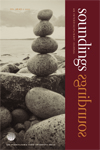
SOUNDINGS
Illuminating the Intersection of Arts and SocietySOUNDINGS, published by Penn State University Press, stands as a notable journal within the realms of the arts and humanities, cultural studies, and sociology and political science. With its ISSN 0038-1861 and E-ISSN 2161-6302, this academic periodical has been a platform for critical discourse and innovative research since its inception in the mid-1970s, although it has experienced several convergence periods. Though currently categorized in Q4 within its respective fields, including rankings that reflect its growing influence, SOUNDINGS continues to provide a rigorous space for interdisciplinary dialogue and scholarly reflection. Despite the absence of open access, the journal’s comprehensive articles are vital for researchers, professionals, and students seeking to deepen their understanding of complex cultural and societal dynamics. With its headquarters located at 820 North Univ Drive, U S B 1, Ste C, University Park, PA 16802, SOUNDINGS invites its readership to engage with contemporary issues through a rich lens of academic inquiry.

H-ermes-Journal of Communication
Empowering Voices Through Open Access ScholarshipH-ermes-Journal of Communication, published by UNIV STUDI SALENTO, is a leading open-access platform dedicated to advancing the field of communication studies since its inception in 2013. With its ISSN 2284-0753, the journal provides unrestricted access to a wealth of research that explores the evolving dynamics of communication in today's globalized world. As an interdisciplinary journal, it aims to foster dialogue among researchers, professionals, and students by publishing high-quality articles that address contemporary issues and theoretical advancements in communication. The journal's commitment to open access ensures that research is available to a broad audience, enhancing its impact and facilitating collaboration across disciplines. H-ermes serves as an essential resource for anyone interested in expanding their understanding of communication theory and practice, making significant contributions to both academia and society.
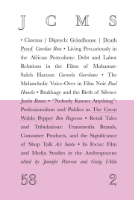
JCMS-Journal of Cinema and Media Studies
Illuminating the Art of Visual NarrativesJCMS-Journal of Cinema and Media Studies, published by University of Texas Press, stands as a vital platform for scholars and practitioners in the realms of cinema, media, and visual arts. With an ISSN of 2578-4900 and an E-ISSN of 2578-4919, the journal has been a part of the academic landscape since its inception in 2018 and will continue to contribute valuable research until 2024. Notably ranked in the top tiers of Scopus, securing Q1 status in Visual Arts and Performing Arts and Q3 in Communication, JCMS features articles that critically engage with both traditional and contemporary issues in media studies. Located in the United States, the journal is committed to providing open access to a wide array of interdisciplinary research, fostering dialogue among researchers, students, and media professionals. By serving as a nexus for innovative scholarship and creative discourse, JCMS enriches our understanding of cinematic and media practices and their impact on society today.
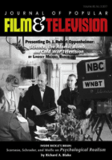
JOURNAL OF POPULAR FILM AND TELEVISION
Illuminating the Impact of Film and Television on Society.JOURNAL OF POPULAR FILM AND TELEVISION, published by Routledge Journals, Taylor & Francis Ltd, stands as a significant platform for academic discourse in the realms of cultural studies, visual arts, and performing arts. With its ISSN: 0195-6051 and an evolving digital presence indicated by its E-ISSN: 1930-6458, the journal has carved out a respected niche since its inception in 1978, continuing to contribute to scholarly discussions through 2024. Its impact within the academic community is underscored by a Q3 ranking in Cultural Studies and a Q2 ranking in Visual Arts and Performing Arts for 2023, highlighting its relevance across diverse fields. Notably, with a Scopus ranking placing it in the 74th percentile among visual arts and performing arts journals, it serves as an essential reference point for researchers, professionals, and students committed to the critical examination of film and television. Although not an open-access journal, it provides valuable insights and analysis that enrich understanding of popular media's impact on society. The journal's location in the United States, with a headquarters in Abingdon, England, further affirms its international scope and influence.

Ekphrasis-Images Cinema Theory Media
Advancing Critical Discourse in Media StudiesWelcome to Ekphrasis-Images Cinema Theory Media, an academic journal dedicated to exploring the intersections of visual arts, cinema, and media studies. Published by the esteemed BABES-BOLYAI UNIVERSITY, FACULTY OF THEATRE & TELEVISION in Romania, this journal serves as a critical platform for scholars and practitioners to disseminate groundbreaking research and innovative ideas within these vibrant fields. With an ISSN of 2067-631X and an E-ISSN of 2559-2068, Ekphrasis is committed to enhancing the discourse surrounding contemporary visual culture, as evidenced by its Scopus rankings in the arts and humanities categories. Aiming to contribute to academic discussions from 2019 to 2024, it invites submissions that challenge conventional perspectives and promote new methodologies. Although currently positioned in the Q4 category for Communication and Q3 for Visual Arts and Performing Arts, the journal is poised for growth and aims to increase its impact factor through the openness of scholarly exchange and rigorous peer review. Join us in advancing the critical discourse at the crossroads of art and media!

POETICS
Elevating Academic Discourse in Communication and LiteraturePOETICS is a leading academic journal published by Elsevier, focusing on the multidisciplinary fields of Communication, Cultural Studies, Linguistics, Literature and Literary Theory, and Sociology and Political Science. With its esteemed Q1 category rankings across several domains, POETICS showcases cutting-edge research that fosters dialogue and innovation within the arts and social sciences. The journal's commitment to advancing theoretical and empirical understanding of the dynamics between language, culture, and society is evidenced by its impressive Scopus rankings, placing it in the top percentiles among its peers. Covering a wide array of topics, from narrative theory to sociolinguistic analysis, POETICS serves as an indispensable resource for researchers, academics, and students eager to explore the intersection of literature and societal discourse. Situated in the Netherlands, the journal benefits from a rich tradition of scholarly excellence and aims to contribute significantly to the evolving landscape of contemporary research through its ongoing publications until 2024.

Miranda
Elevating research with rigorous peer review.Miranda (ISSN: 2108-6559, E-ISSN: 2108-6559) is a distinguished open access journal published by UNIV TOULOUSE II-JEAN JAURES, dedicated to advancing knowledge across various fields of the humanities and social sciences. Since its establishment in 2010 as an open access platform, Miranda has aimed to foster inclusive academic discourse by providing unrestricted access to high-quality research. With its commitment to accessibility and scholarly excellence, this journal serves as an essential resource for researchers, professionals, and students seeking to enrich their understanding and engage with contemporary issues within their disciplines. The journal prides itself on its rigorous peer-review process and aims to publish original research, reviews, and interdisciplinary studies that contribute to the evolving landscape of humanities and social science research. Located in Toulouse, France, Miranda is poised to make a significant impact in its field and invites contributions that reflect diverse perspectives and innovative research methodologies.
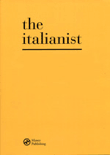
Italianist
Exploring the Depths of Italian Culture and HistoryItalianist is a distinguished peer-reviewed journal published by Routledge Journals, Taylor & Francis Ltd, focusing on the multifaceted aspects of Italian culture, history, and anthropology. With a proud history spanning from 1981 to 2001 and then again from 2003 to 2024, this journal caters to a global audience of scholars, professionals, and students seeking to deepen their understanding of Italian studies. Although it currently operates without an open access option, it provides invaluable insights that contribute to critical discourse in the field, evidenced by its rankings in Scopus: Q4 in Anthropology and Q3 in History, demonstrating its growing influence among academics. The journal is based in the United Kingdom and strives to promote high-quality research that explores historical narratives, cultural practices, and anthropological themes related to Italy, making it an essential resource for anyone interested in this rich and vibrant area of study.